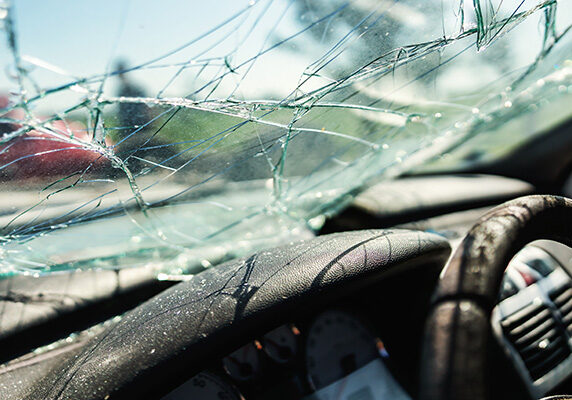Whether a car accident is a minor fender bender or stops just short of totaling your car, you will need to get the damage repaired. When you file a claim with your insurance company, most insurers have a number of auto repair shops that they can suggest to customers. These repair shops are typically represented as “preferred locations” or “within our network.”
This language is intended to make you trust your insurance company’s recommendations while also minimizing repair costs. But regardless of how an insurance company characterizes their repair recommendations, by law you are free to choose any repair shop you prefer.
What does it mean for a repair shop to be “preferred” by an insurance company?
An insurance company preferring one body shop over a dozen others isn’t a guarantee of quality service. What it does mean is that your insurance prefers that car repair shop for financial reasons.
For example, Geico offers the Auto Repair Xpress program, which offers the ability to deliver your damaged vehicle to any one of Geico’s designated Xpress facilities. A claims adjuster will work closely with the repair shop to ensure quality repairs are performed quickly, and the company even offers a lifetime warranty for any repairs done at the facility. This may sound great on paper, with every step of the process designed to give you a sense of trust in the repair shops Geico prefers, and by extension, Geico itself.
The issue is that, again, “preferred” has little to do with the actual quality of the repairs. Geico and other insurance providers want to stay profitable, so they want repair costs to be minimized as much as possible. This is what drives them to work with specific shops over others.
Preferred car repair shops are typically more willing to work with claims adjusters to reduce the costs of the repairs.

When you bring your car to a repair shop, the technicians will assess the vehicle to determine how much time the repair will take, and what parts are needed. A claims adjuster, however, might offer a different estimate, and they aren’t approaching it from the perspective an experienced mechanic. They work for your insurance company, and they’re looking for ways to limit how much their company has to pay for repairs.
An “in network” body shop will work with the insurance company to find a happy medium. This can mean discounting labor costs to meet the estimate, or installing used or refurbished parts instead of new ones. If the shop estimates ten hours of labor and $500 for a new replacement bumper, the adjuster might suggest rushing the installation process to cut those hours, and sourcing a used bumper from another supplier.
This isn’t to say that insurance companies don’t care about the quality of your vehicle repairs. But there is a financial incentive for the company to steer you towards a prefered shop willing to cut corners to meet the insurance company’s budget.
The problem is that insurers in the past have used false statements to pressure their policyholders to use preferred repair shops. And while laws have been passed in all 50 states to prevent this, some insurance companies allegedly continue to find ways to push their customers to preferred repair shops, without customers realizing what their rights are. You might have already experienced this for yourself without even knowing it!
In response to alleged repeated violations of existing laws by insurance companies, California was forced to pass new legislation.
In 2016, the state of California approved of a new update to anti-steering laws, intended to curtail some of the common, deceptive tactics policyholders faced when trying to choose non-preferred auto repair shops. Insurers are no longer allowed to refer customers to a specific repair shop unless they are asked by a customer to do so, and are required to provide customers with unbiased information.
In addition, insurance companies cannot force you to use preferred body shop under any circumstances, or by any means. They cannot lie about the quality of service provided by the shop you select. The law also specifies that an insurance company cannot require you to travel more than a certain distance from your home to a preferred repair shop (the exact distance depends on your region’s population).
These laws are intended to protect policyholders from being pressured by insurance companies to use preferred repair shops, but they also address concerns raised by shop owners and operators as well. Independent auto repair specialists have complained about being coerced by insurance companies, claiming that customers have been sent to shops who are more willing to cut corners on repairs.
California law does not allow insurers to suggest specific body shops unless asked, but they may still use carefully crafted language to manipulate policyholders.
Many insurance companies do follow the laws regarding steering their customers, and do not force body shops to perform sub-standard work. But while steering is against the law, some insurers skirt these laws by using manipulative language to push you towards preferred shops. This occurs often enough that some body shops feel compelled to post disclaimers addressing the issue directly.
Phrases like “That shop is not in our Preferred Network” aren’t an overt obstacle to a car owner’s choice of shop, but it can make you think twice. It’s subtle, and incredibly effective at manipulating customers.
Your insurance might claim that they cannot guarantee the work at that shop, or provide a warranty for the repair. Some insurers offer lifetime warranties for auto repairs with certain policies, while others do not. Alternatively, an insurance agent might indicate that claims will be more difficult or take more time to resolve with a given shop.
These tactics are all intended to get you to ask for suggestions on car repair shop, which opens the door to being able to legally provide references to their preferred network shops.
Body shops occasionally face insurance companies who refuse to pay in full for services rendered if they go over company estimates.
One of the clearest examples of how costly steering tactics can be is a case from 2017. A Honda Fit was taken to the John Eagle Collision Center in Dallas, Texas in order to repair roof damage sustained during a hailstorm. The car was later sold to a local couple who were unaware of the damage the car had previously sustained, or the repairs that were performed.
When the Honda was involved in a head-on collision in 2013, the roof collapsed, trapping the occupants inside the vehicle as it burst into flames. They survived, but suffered severe burns and crush injuries.
Over the course of investigating the accident, it was discovered that the repair shop had elected to use a cheaper repair method on the car’s roof, rather than the more expensive method recommended by the vehicle’s manufacturer. During the 2017 lawsuit, the victims’ lawyer claimed that State Farm, the original owner’s insurance company, had pressured the repair shop to use the cheaper method. Body shop director Boyce Willis stated that the insurance company could override manufacturer OEM repair specifications by simply not paying the bill.
The victims were awarded $42 million, and the repair shop was judged liable for 75% of the claim. State Farm was able to negotiate with the victims to dismiss further litigation with prejudice, but the specter of steering practices still plagues auto repair shops around the country. The same year that the Seebachans won their lawsuit, a body shop in the state of New York sued Tri-State Consumer Insurance for unfair claims practices. Tri-State allegedly insisted on using non-OEM parts and repair methods, and set arbitrary caps on how much they would reimburse the shop for repairs.
No matter what your insurance company says, car accident victims can get repairs wherever they prefer. But there are some things you should consider when choosing a repair shop.
In the aftermath of an accident, you’re probably feeling more than a little stressed, and there’s pressure to resolve everything as quickly as possible. It’s best to take a step back and try to think about things calmly. Research multiple locations if you’re unsure about who to trust, and keep these questions in mind:
● Does the shop offer extended or lifetime warranties for their repairs?
If your insurance does not provide extended warranties for repairs, you will want to go to a body shop that does. This way, if something does go wrong with the repairs, you don’t have to worry about additional costs later down the line.
● Are they certified by your vehicle manufacturer?
Some auto repair shops offer general services for all vehicles. However, more serious damage to a car may require specialists who specialize in specific vehicle makes and models. Ask the shop if they are certified by the manufacturer. If they are not, you may want to move on.
● Do customer reviews show any serious issues with their work?
Check popular online review sites for customer feedback. Consistent negative reviews describing substandard repairs, use of used parts, or other problematic practices are a red flag!
● Are they “preferred” by your insurance?
Remember, just because a repair shop is in your insurance network doesn’t mean you’ll receive bad service. But if you are concerned that a preferred shop will cut corners to appease a claims adjuster, your only choice is to choose an independent shop instead.
Car accidents can be incredibly stressful to deal with. The last thing you need is to be told that you cannot use a specific repair shop without some form of consequence or delay. Remember your rights: If you are involved in an accident, you have the legal right to take your car to the auto repair shop you prefer. Your insurer cannot, in any way, force you to choose a specific shop or interfere with the process of resolving your accident claim because you did not stay within their preferred network. If your claim does get held up for any reason, or if you’re simply not sure how to proceed, consult with a car accident lawyer.



